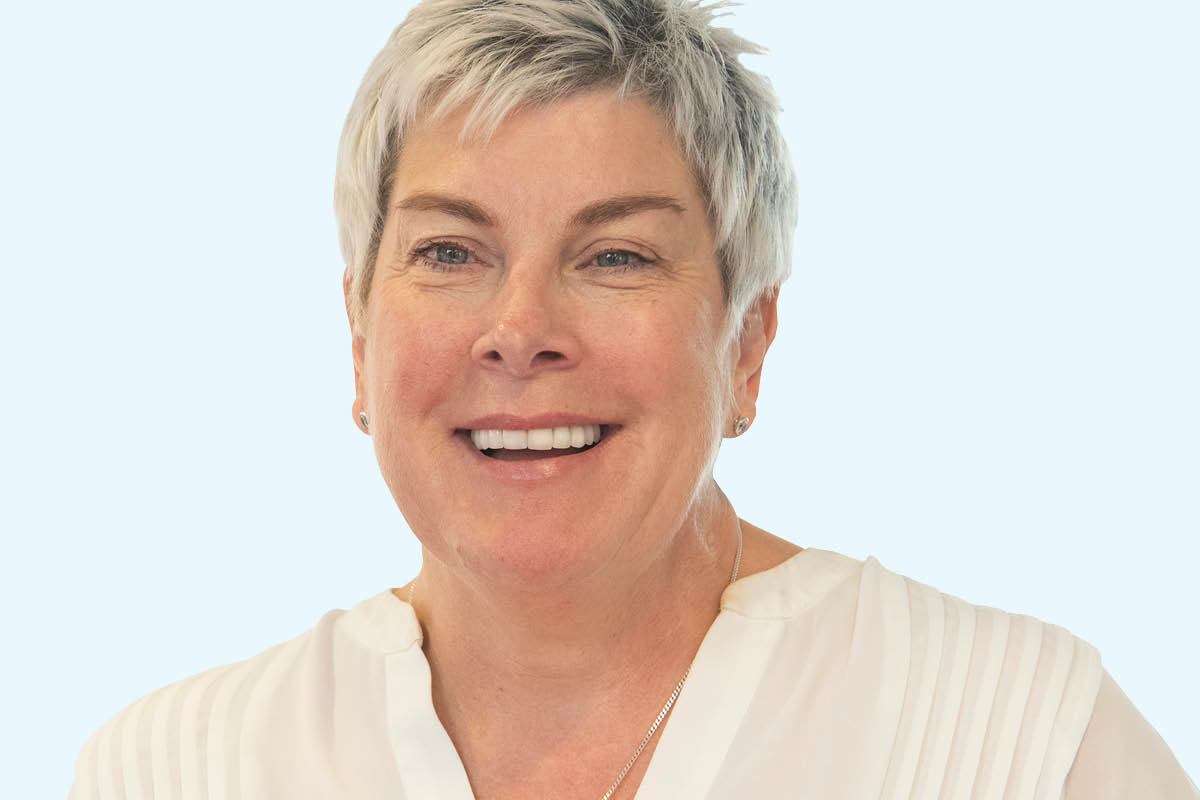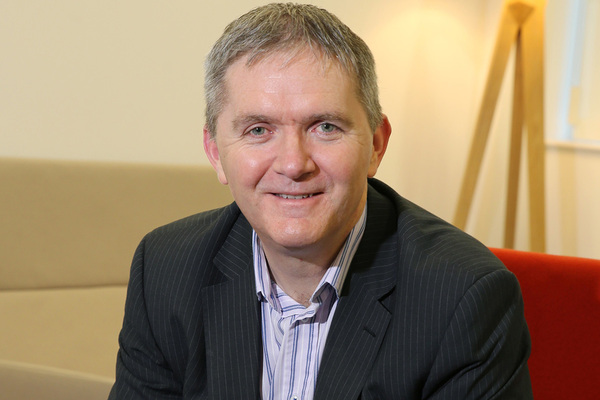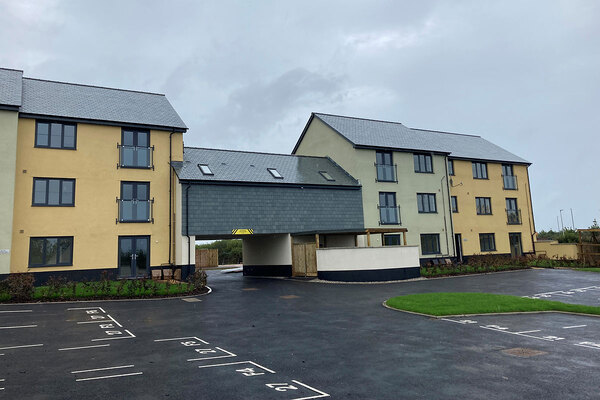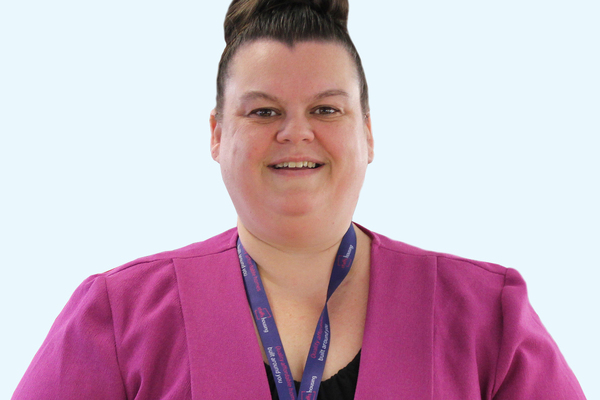The net zero challenge: what organisations need to achieve in the next 10 years
How are housing organisations evaluating their internal decarbonisation to reduce corporate carbon emissions? Inside Housing and energy and utilities management consultancy Inenco hosted a roundtable to find out. Illustration by Neil Webb
In association with:

The pandemic has reshaped our lives in many ways and the housing sector has not been immune. From working from home for staff, to dealing with repairs during lockdown and rent arrears, the challenges have been widespread. But will the pandemic offer an opportunity for organisations to step up their corporate decarbonisation strategy?
To answer this, Inside Housing brought together a group of key figures as part of a roundtable, sponsored by sustainability and energy consultant Inenco, to evaluate where the boundaries are; what can be done now; and the focus for the next five to 10 years for organisations.
The first step is for organisations to take a look at their corporate estate emissions: how people are working, particularly now many are homeworking; how they are travelling around; and how offices and staff facilities can be upgraded.
Richard Ellis, director of sustainability at Peabody, says the group has “embraced” the shift and sold two of its three main offices. The one it is left with will be “more a meeting and training space. This will mean the number of desks for Peabody being reduced from 1,500 to 400. “We envisage that everybody will be working from home at least three or four days a week,” he says. As a result, it means Peabody will now start tracking how carbon emissions will be shifted to the homes of their staff.
Frances Holliss, an architect and lecturer at London Metropolitan University and founder of the Workhome Project, says that a reduction in corporate space is “a comparatively easy win” and was encouraged by Peabody’s approach. She also believes, based on her research, that a move to homeworking will mean a cut in carbon emissions. Due to the cost factor, she believes, people do not use their heating at home as much. “It’s not a given that corporate carbon will be shifted to the home,” she says.
Steven Henderson, group director of finance at large Scottish housing association Wheatley Group, says it would have “slightly fewer offices and make them as energy efficient as possible” having brought forward its five-year strategy.
Samantha Granger, head of environmental sustainability at Thirteen Group, says tackling the organisation’s own carbon emissions is what it has greatest control of so it should be the priority.
“We’ve gone down from two main sites to one and are encouraging homeworking,” she says.
She drew a comparison with the banking sector. “Banking has moved forwards three years quicker than expected due to the pandemic and that’s probably the same for our business in respect to our office space,”
she says.
Diana Lock, head of energy and environment at Optivo, says it is also reducing office space. “We have a booking system so that from September we are just using our offices as mainly meeting places for specific activities, rather than people going in on a daily basis.”
Grainia Long, chief executive of the Northern Ireland Housing Executive (NIHE), suggests another way to tackle the issue of carbon reduction. NIHE is interested in taking a “place-based approach” to the problem of reducing carbon emissions, she explains.
“In Belfast if all the big movers, the Housing Executive, the health trust and the transport agency came together we could make a big difference to pollution,” says Ms Long.
Agreeing targets
Dan Pardesi, head of social housing at Inenco, says there is “still work to do” around organisations getting their own house in order to reduce carbon emissions and strategies, and plans need to be set out before target-setting. This might be easier, but defining a strategy has to come first.
Guy Woodroffe, policy lead for the Social Housing Decarbonisation Fund at the Department for Business, Energy and Industrial Strategy (BEIS), says he has been “hugely impressed by the ambitions that have been set and the statements coming from the sector, and the strategies that are becoming more commonplace”.
But he adds: “I’m keen to make sure we don’t leave anybody behind on this. So it’s about where we can build collaborations between big providers and small providers, and we can share capability and expertise – some will have it in-house, but some won’t. It’s how we can make sure it’s connected in the right way.”
Ms Lock says the G15 group had commissioned a piece of work so its members could agree a “common deliverable metric so we all know what we’re aiming for [on decarbonisation]”. On the issue of funding and finance, she adds: “We want to see some exciting partnerships with businesses to scope out what we can do and can we come at this in a more lateral way?”

Will Ray, head of sustainability at Clarion, admits it is a “challenge” for the sector to define targets on decarbonisation. “The general corporate mass can say ‘we are heading for zero carbon’,” he explains. “But for our sector, with the specific focus on residents in poverty or who are vulnerable, we have an additional challenge to make the transition but be affordable at the same time. This is a challenge that is forgotten.”
He also warns about the sector being aware of what is ahead of them. “In the change towards zero carbon, I don’t think the sector has fully comprehended the shifts in terms of what is going to happen to our business models and the way we procure our services,” he says.
However, he says Clarion is “really pleased” with the government’s Social Housing Decarbonisation Fund and the demonstrator project that it is a part of. “It’s that combination of pushing for innovation that will drive the sector forward,” he says.
In numbers
1,100
Reduction in desk space at Peabody
6,000
Peabody homes over 100 years old
Tenant involvement
The issue of tenant involvement is then raised. Nicole Sharp, chief operating officer at Sovereign Housing, says its residents have been engaged with setting the standards around decarbonisation. But she adds: “The key will be when we put that into reality and what that means for residents that don’t meet that standard. We’re finding it’s predominantly the ex-local authority stock that is failing the current standard. We can’t knock it down, so what will that mean for customers in reality?
“And one of the big learnings is how we engage with and listen to customers as we engage new technologies in the home. You can put great technology in but then a customer might not use it in the way it should be used. The whole thing is about working with customers.”
On the issue of tech, he says: “We have a lot of people in fuel poverty and we want to try to help them with our existing and newer technologies. The key is to work with the residents to co-create the solutions.”
Mr Pardesi echoes this, saying there will be a vast amount of change needed to hit targets, and technology, new processes, data and analysis play a vital role in understanding the way forward.
Ms Long suggests navigating the issue with tenants could bring challenges. “We have a huge amount of work ahead to educate, inform and advise [tenants] on the right solution and that doesn’t always go down well. We have to balance what the residents want with what we know the building needs as a landlord,” she says.
Funding decarbonisation will also be an issue, she admits. “The funding models will be challenging but none of this is a reason for not doing it – we have to retrofit our homes and we have to do it at scale. If we don’t get cracking this decade we will have much greater problems to deal with. And we have a lot of work to do to help people understand energy in their homes.”
Jon Bootland, chief executive of the Passivhaus Trust, also has worries. “My concern is the comfort and well-being of the occupants so that we don’t end up going down rabbit holes of high fuel bills or poor comfort conditions to chase an illusory carbon reduction target.”
Amelia Womack, deputy leader of the Green Party, points to the fact that the impact of climate change is already very real. “There are towns that have already been decommissioned because of the flood risk here in Wales… It is really stark what the impact is going to be, especially in poorer communities.
“Often the barriers as to why people won’t engage with environmental ideas is finance or the hassle. There are two levels of engagement: how we create policy so that the environmental option is the cheapest and easiest option; and ensuring that we are listening to people and hearing what their barriers are.”
The session wraps up with Mr Woodroffe explaining what lies ahead and what BEIS wants from the sector. “We will be launching the next wave of the Social Housing Decarbonisation Fund in early autumn, which will be £160m this time around,” he says.
In terms of what he wants from providers, he concludes: “I’d be interested to hear back from the sector on how BEIS can support tenant engagement and how we can support housing associations in creating the right sort of collaborations and partnerships with local authorities.”
Participants
Martin Hilditch (chair), editor, Inside Housing
Jon Bootland, chief executive, Passivhaus Trust
Richard Ellis, director of sustainability, Peabody
Samantha Granger, head of environmental sustainability, Thirteen Group
Steven Henderson, group director of finance, Wheatley Group
Frances Holliss, architect and lecturer, London Metropolitan University, and founder, Workhome Project
Diana Lock, head of energy and environment, Optivo
Grainia Long, chief executive, Northern Ireland Housing Executive
Dan Pardesi, head of social housing, Inenco
Will Ray, head of sustainability, Clarion
Nicole Sharp, chief operating officer, Sovereign Housing
Amelia Womack, deputy leader, Green Party
Guy Woodroffe, policy lead for the Social Housing Decarbonisation Fund, Department for Business, Energy and Industrial Strategy















